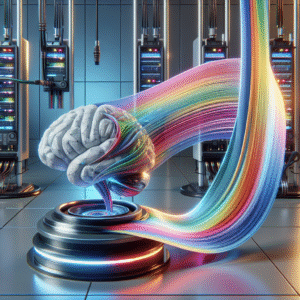What if I told you that the future of technology might just reside in a pair of goggles? That’s right; I’m talking about Virtual Reality, commonly known as VR. With advancements happening almost daily, VR technology is not just limited to gaming anymore. It’s set to transform how I interact with the world around me.
What is Virtual Reality?
Virtual Reality is a simulated experience that can replicate an existing environment or create an entirely new one. It’s as if I’m stepping into another world, one where I can interact with objects and move through spaces as if I were physically there. This technology uses headsets and sometimes other accessories to immerse me fully.
The Evolution of VR Technology
VR has come a long way since its inception. I often think back to the early attempts in the 1960s with rudimentary systems, and it’s fascinating to see how far we’ve come. The development of VR technology has been driven by advancements in various sectors including gaming, entertainment, education, and medical fields.
Early Beginnings
The first notable venture into VR was the Sensorama, created by Morton Heilig in 1962, which offered an immersive experience in a five-sensory environment. Fast forward to the 1990s, and I find myself reminiscing about the Virtuality Group’s arcade systems and the first head-mounted displays emerging from various tech companies.
The Rise of Consumer VR
The arrival of devices like the Oculus Rift in 2016 marked a significant shift in consumer access to VR. Suddenly, I found myself able to buy a headset and experience virtual worlds from the comfort of my own home. This breakthrough opened the floodgates for numerous developers keen to create engaging VR experiences.
Current Applications of VR Technology
The beauty of VR is its versatility; it’s not confined to one sector. Here are some areas where I have seen VR make a significant impact:
Gaming
Gaming has been a pioneer in VR technology, providing some of the most engaging experiences. Titles like “Beat Saber” and “Half-Life: Alyx” allow me to step into thrilling environments and actively participate, rather than just observing from a distance.
Education and Training
VR is revolutionizing education for me and many students. From medical schools using VR simulations for surgeries to history classes that can transport me back in time, the potential for experiential learning is incredible.
| Field | Application |
|---|---|
| Healthcare | Simulations for surgery practice |
| Military | Tactical training scenarios |
| Aviation | Pilot training in realistic settings |
| Corporate Training | Soft skills training through role-playing scenarios |
Real Estate
When it comes to real estate, VR offers virtual tours of properties without needing to be physically present. I love how prospective buyers can explore homes from anywhere, making the house-hunting process much more efficient.
The Future Trends in Virtual Reality
I’m genuinely excited about the trends emerging in VR. Their potential is limitless, and I can hardly wait to see how they’ll unfold in the coming years.
Hardware Improvements
While current VR headsets provide a good experience, there are always improvements being made in resolution, weight, and comfort. Future headsets might become lighter and offer even higher resolution displays, making my experience even more immersive.
Integration with Other Technologies
VR isn’t living in a bubble; it’s increasingly integrating with other technologies such as Augmented Reality (AR) and Artificial Intelligence (AI). This combination will potentially create experiences I can’t even imagine yet. Imagine using AI to tweak my VR experience based on my preferences or interactions.
Social Interaction in Virtual Spaces
The social potential of VR excites me immensely. Platforms like VRChat allow me to interact with people from around the world. As technology advances, I can foresee virtual meeting spaces where I can work and socialize seamlessly with colleagues and friends, regardless of our physical locations.
Challenges Facing Virtual Reality Technology
While I get excited about the future, it’s crucial to consider the challenges that VR technology currently faces.
Accessibility
One of the first challenges is accessibility. While prices have come down, VR devices can still be costly for many. I hope to see more affordable options that don’t compromise on quality, making it accessible for everyone.
The Physical Space Requirement
Another issue is the physical space needed to use VR safely. I often find myself moving furniture to create enough room for a good VR experience, which can be frustrating. Future solutions might include more sophisticated tracking technologies that require less physical space.
Health Concerns
There are also ongoing discussions regarding health concerns related to VR, including eye strain and motion sickness. It’s something I always keep in mind when using these devices, as they can affect my overall experience. Companies will need to ensure that their products prioritize user health and comfort.
The Role of VR in Various Industries
I’ve touched on several industries that utilize VR, but it’s fascinating just how far-reaching this technology is.
Healthcare
In healthcare, beyond training simulations, VR is becoming a tool for patient treatment. I’ve learned that it’s been shown to help chronic pain patients manage their pain through immersive experiences and distraction techniques.
Entertainment
The entertainment sector continues to innovate, with VR movies allowing me to experience stories in ways I hadn’t thought possible. I can view a scene from different angles, feel like a part of the story, and interact with the content in a meaningful way.
Travel
Given the current reality of travel restrictions, VR’s role in tourism has surged. I can “visit” far-off destinations without leaving my home. While nothing can truly replicate being there, it provides a taste of what awaits me when I can finally embark on an adventure.
VR in the Workplace
The workplace is beginning to recognize VR’s potential. Companies are exploring how VR can enhance collaboration, training, and even employee well-being.
Collaborative Workspaces
I think about how I can join virtual meetings as an avatar, navigating a 3D space while discussing important matters. It adds a layer of interactivity that regular video conferencing simply doesn’t provide.
Training and Development
For training purposes, VR can simulate real-life scenarios that are too risky or impractical to practice in person. It allows me to train in a safe environment and helps improve my skills before entering the real world.
The Future Landscape of VR Technology
I see a promising landscape emerging as VR continually evolves. The interplay between user experience, technological growth, and practical application will redefine how I experience everything—from entertainment to education and beyond.
The Ethical Implications of Virtual Reality
While the potential of VR excites me, it’s essential to address the ethical concerns that accompany it.
Privacy Concerns
My data privacy is a significant issue in the digital age, and VR is no exception. With every action I take in a virtual environment leaving a data trail, companies will need to take my privacy seriously and implement robust measures to protect my information.
Desensitization and Reality
There are discussions about how immersive virtual experiences might desensitize me to violence or trauma. As technology advances, it will be crucial to strike a balance that fosters enjoyment without losing sight of ethical boundaries.
Advancements in VR Content Creation
As I navigate this expansive landscape, I’ve realized that content creation for VR is a significant area that deserves attention.
User-Generated Content
With platforms allowing users to create their own VR experiences, I can participate in shaping the VR landscape. This democratization of content creation opens opportunities for innovative and diverse narratives.
Storytelling in VR
Storytelling in VR is on the brink of a revolution. I can engage with stories in ways I never thought possible, influenced by my decisions and behaviors in a virtual space. This allows for richer, more personalized encounters.
Conclusion
As I reflect on everything VR has to offer, I can’t help but feel a sense of excitement for the future. The journey of VR technology is just beginning. It’s fascinating to think about how I’ll engage with this ever-evolving medium in my personal and professional life. The possibilities are vast, and as progression continues, I can only anticipate the ways it will reshape my experiences, making my interactions with both the familiar and the unknown all the more compelling.






